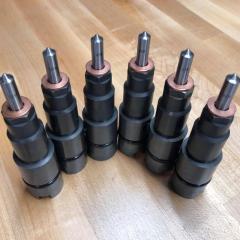- Replies 5
- Views 6.5k
- Created
- Last Reply
Top Posters In This Topic
-
Dynamic 1 post
-
notlimah 1 post
-
kzimmer 1 post
-
skyhigh4by 1 post
Popular Days
Most Popular Posts
-
The billet front cover is all about flex due to the converter clutch pushing against the inside of it. When the converter clutch applies, the apply piston simply pushes the disc(s) against the inside
-
I’d imagine it’s just because of the torque these engines can put out, not so much the speed at which it’s happening. That’s why Dynamic only uses triple disk converters in his builds. Go



What is the benefit of a torque converter having a billet front cover or not?
Im not questioning the internals of the TC as I understand what bigger/better components within the TC do but I’m just talking about the billet cover itself...